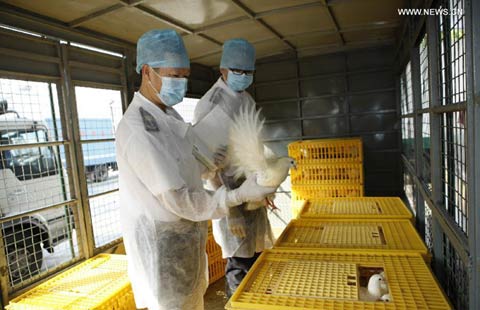China rare earth export jumps 31 pct in August
(Xinhua) Updated: 2014-09-08 20:37BEIJING - Chinese companies exported 2,353 tonnes of rare earths last month, nearly 31 percent more than the previous month, new customs data showed on Monday.
China's rare earth exports fell to 1,556 tonnes in June, the lowest level of this year, according to the General Administration of Customs (GAC).
For the first eight months, exports rose 35 percent year-on-year to 18,252 tonnes. In value terms, however, exports contracted 7.9 percent from a year earlier to 261.6 million U.S. dollars owing to falling prices.
Export till the end of last month was nearly 60 percent of the full-year quota of 30,610 tonnes, shared by 28 production and circulation enterprises.
Rare earths, a class of 17 mineral elements, are some of the most sought after metals due to their vital role in green technologies like wind turbines and car batteries as well as in military sectors.
With its rare earth reserves accounting for 23 percent of the global total, China supplies over 90 percent of the world's market demand at the cost of much pollution.
To curb environmental degradation and protect resources, China has set output ceilings, export quotas and stricter emissions standards as well as high resource taxes for some ores.
In the previous two years, companies had failed to use their full annual export quotas.
In 2013, China exported 22,493 tonnes of rare earths, up 38.3 percent from 2012. But it was well below the full-year export quota of 31,001 tonnes. In 2012, exports at 16,265 tonnes, just over the half of the full-year quota.
Early last month, the World Trade Organization ruled that China's export duties, quotas, and administration of rare earths, tungsten and molybdenum products were inconsistent with WTO rules and China's Accession Protocol.
In March 2012, the European Union, Japan and the United States teamed up to bring a joint case to the WTO over China's measures on exports of rare earths, tungsten and molybdenum.
They claimed that the restriction had limited other countries' access to the minerals, given China a competitive advantage and hurt other producers and consumers.
- China reports decent exports, weak imports and record high surplus again
- International investment, trade fair opens in Xiamen
- China allocates funds for crop diseases, pests control
- China's shift to high-end electronics takes time: HSBC
- China drops anti-dumping measures on imported rubber
- Carlyle raises $3.9b for Asia fund
- $6b in foreign trade contracts signed at China-Eurasia Expo
- Debts pile up, weighing on steelmakers
















